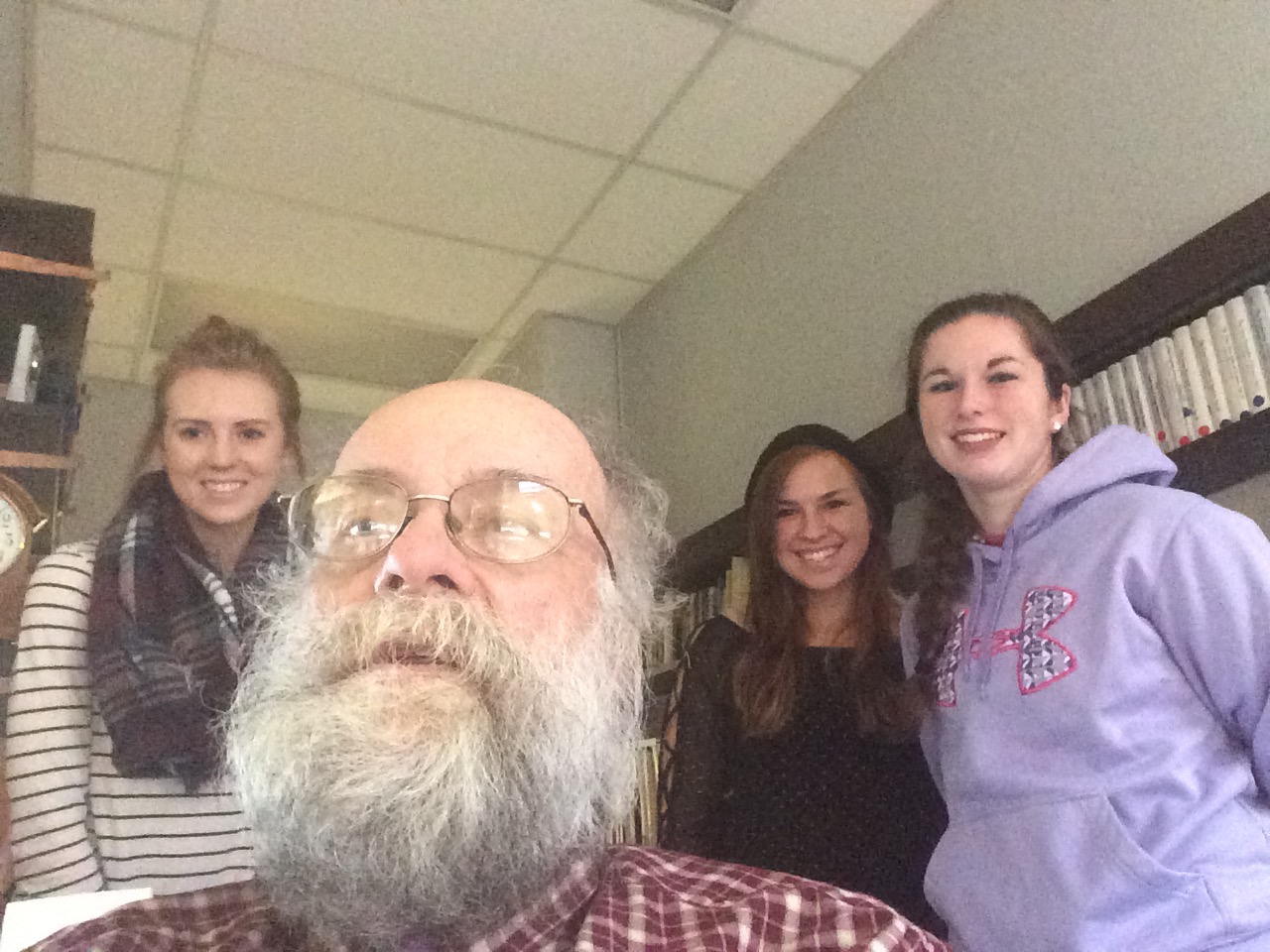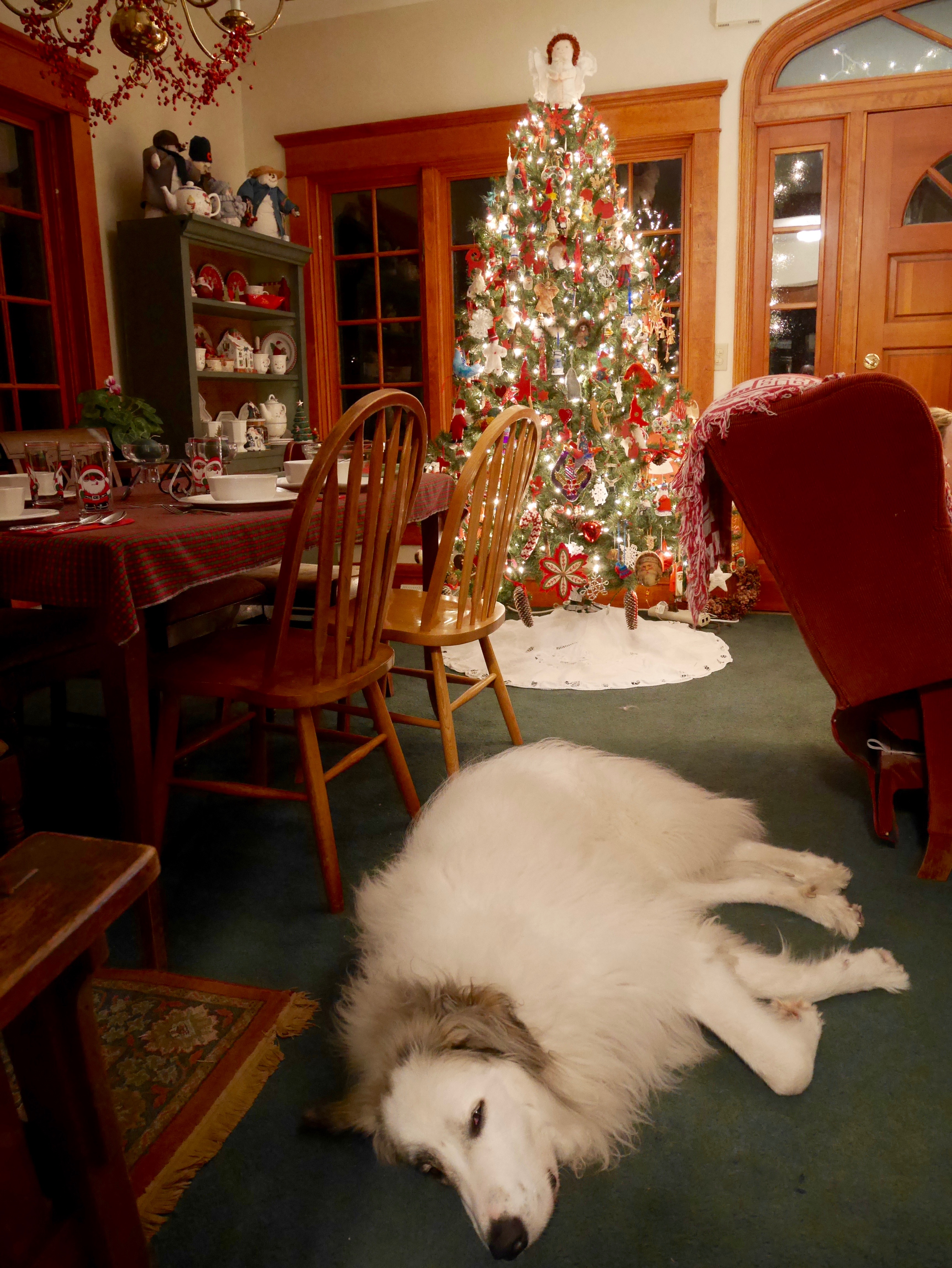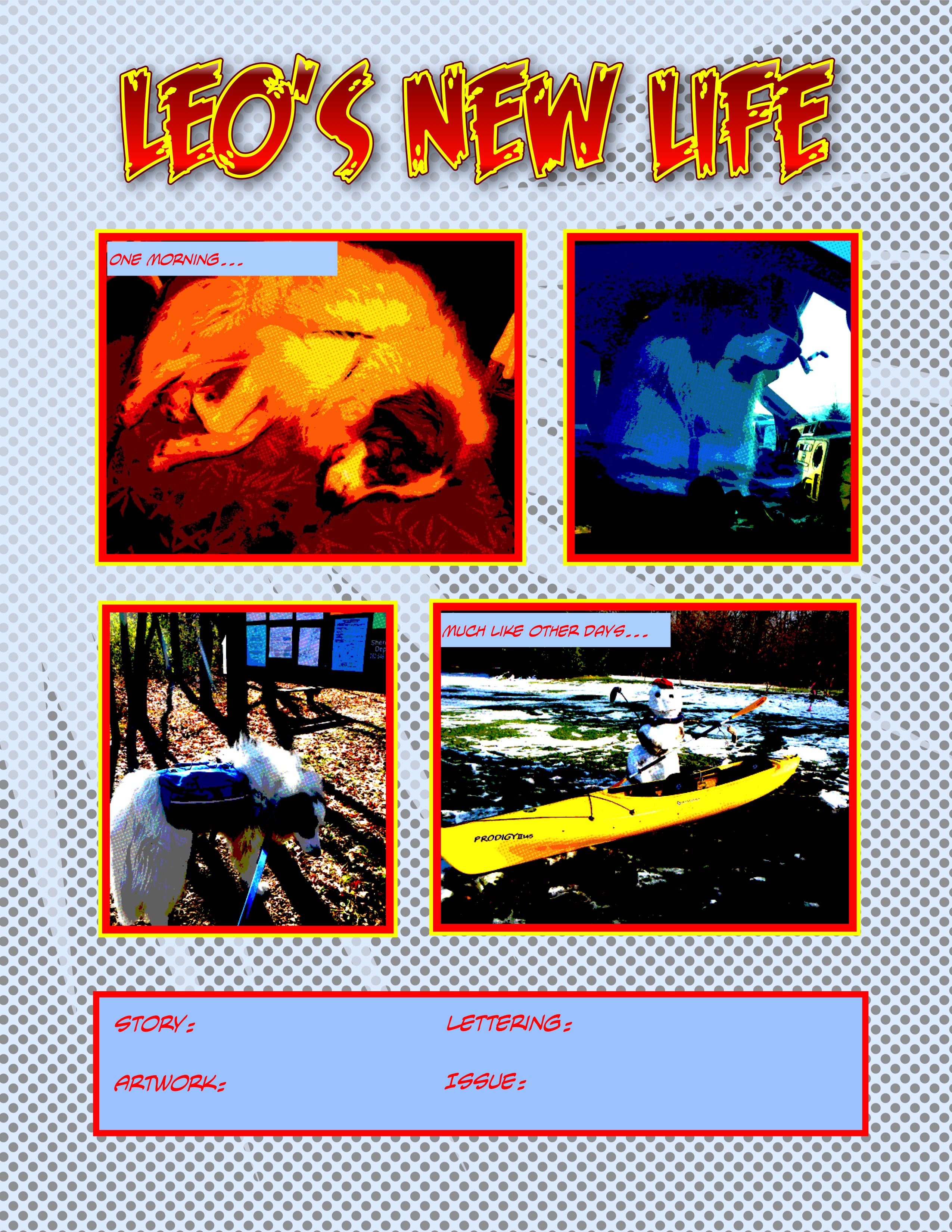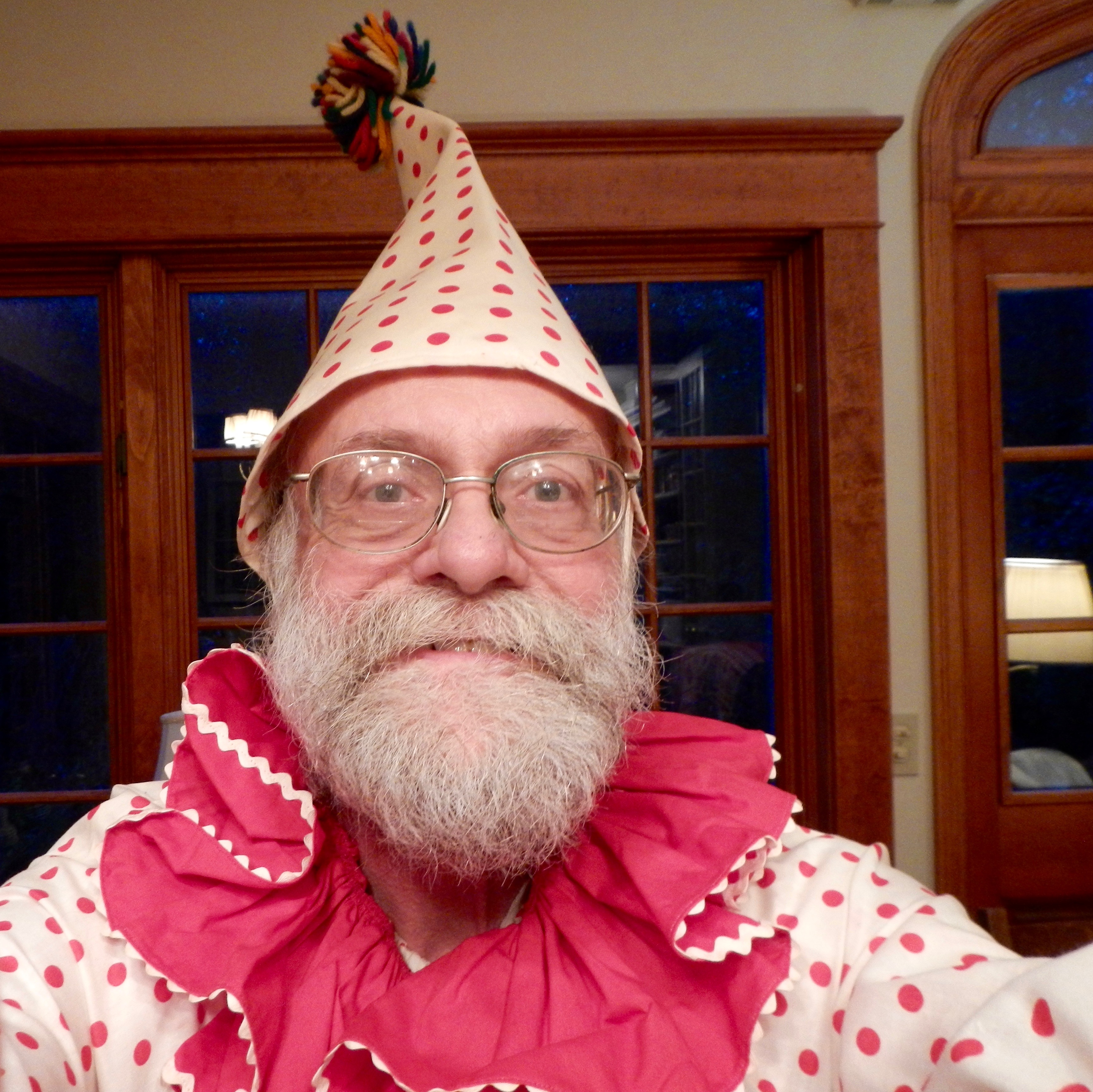 We are currently examining different content curation services as to their strengths, weaknesses, ease of use, and usefulness to students. A very good guide to content curation developed by others can be found here:
We are currently examining different content curation services as to their strengths, weaknesses, ease of use, and usefulness to students. A very good guide to content curation developed by others can be found here:
Paper.li is a content curation service that quickly creates a newspaper-like publication for you. To start you simply create an account through Facebook, Twitter, or email. I would recommend investing in a “Pro account” because it allows you more options, such as advertisement-free newspapers. To begin creating your newspaper you can search keywords and Paper.li will automatically retrieve articles, videos, and photos from Twitter, Google+, and RSS feeds that are related to the topic you have selected. You can also find your own content. To do this you simply go to settings and drag the blue “Paper.li” button to your “favorites bar”. When you find an article you like you click on the Paper.li bookmarklet and select which newspaper to add the article to.
Once Paper.li has completed its retrieval for you, you can edit the layout and the title. You can delete any content you dislike or find irrelevant and you can add pictures and colors to the background to help liven up your newspaper. Upon the completion of your adjustments, you can select whether or not Paper.li should automatically publish each newspaper you create or whether you would like to save them as drafts until you feel the paper is sufficiently developed. You can also choose how often the Paper.li retrieves updates. You could update your paper each day, or less frequently. This allows for your subscribers to be reading the most up to date material on your topic.
Once you have decided your newspaper is complete and ready for publication, you can share it across several social media sites, such as Facebook, Twitter, and LinkedIn, and you can email it to individuals. These same options are also available for each article within your newspaper. This feature allows you to promote your newspaper further and increases the likelihood of gaining subscribers. Subscribers are those who are allowed access to your newspapers. You also have the ability to control who can and cannot be a subscriber to your newspapers. Therefore, if you have a newspaper that is strictly for the workplace, you can customize that paper so only select individuals can view it.
One limitation of Paper.li is that each newspaper you create must be upgraded to Pro. Another limitation is that Paper.li occasionally does not find any content to publish. Therefore, some days your newspaper will be full of articles, videos, and images, and other days it will be a blank slate. A third problem I found occurred when creating my own newspaper. On Thursday I manually added all of my own content to a newspaper. Monday the paper had updated and but had only had two videos in it— supplying next to no news to subscribers. It seems as though we are not the only ones who struggle to actualize the potential of Paper.li as 2015 is the first time in six years that the site did not make Jane Hart’s Top 100 tools for learning.
Despite the flaws I’ve noted (which may be due to my inexperience with the tool) one very nice feature of Paper.li is that they have a video tutorials for just about every question a person could have. These videos exhibit step-by-step instructions on how to complete a tasks. Another beneficial aspect of Paper.li is the timely manner in which their customer service responds to assist your needs. Paper.li has considerable potential as a curating tool. However, it needs some major improvements.
Contact us if you’d like to see one off our early productions.
We welcome any feedback or learning from your experiences with Paper.li.
Author: Professor David Simpson
What Good Books Have You Read This Year?

“What good books have you read this year?” recently asked my former student and fellow bibliophile, Susan Gusho recently on FaceBook. Susan, who like so many former students, continues to influence me in what I read and how I teach. Though I do not read as much or as widely as colleagues like Hugo Hartig, who since retiring, has often shared his annual reading list on FaceBook, I try to read books for pleasure on a regular basis.
Here are books I have read this year that were well worth my reading:
- David Mitchell’s Slade House: A Novel
- Lauren Groff’s Fate and Furies: A Novel
- Robert Galbraith’s (aka JK Rowling) Career of Evil (Comoran Strike)
- Carroll Colleague John Garrison’s Glass (Object Lessons)
- Cixin Liu’s The Three-Body Problem and The Dark Forest. Alas, I must wait until August for the translation of the third part of this science fiction trilogy.
- Harper Lee’s Go Set a Watchman: A Novel
- Steven Jarvis’ Death and Mr. Pickwick: A Novel
- Neal Stephenson’s Seveneves: A Novel
- Ann Morgan’s The World Between Two Covers: Reading the Globe
- Naomi S. Baron’s Words Onscreen: The Fate of Reading in a Digital World.
- Emily St. John Mandel’s Station Eleven.
- Anthony Doerr’s All the Light We Cannot See (Thank you, sister-in-law Becky O’Connor for giving this to me—and for instilling the love of reading in children and adults).
- Kazuo Ishhiguro’s The Buried Giant
- Sian Beilock’s How the Body Knows Its Mind: The Surprising Power of the Physical Environment to Influence How You Think and Feel.
On my short list of books to read (or finish) over the holiday break—I don my invisibility cloak from Carroll on December 18 until January 19)—- are the following:
- Brian Selznicks The Marvels
- Mark R. Schwen’s Leading Lives that Matter: What We Should Do and Who We Should Be.
- Douglas Rushkoff’s Present Shock: When Everything Happens Now (Thank you, Davis Endries, for calling my attention to this book.)
- Jonathan Franzen’s Purity: A Novel
- Oliver Burkeman’s The Antidote: Happiness for People Who Can’t Stand Positive Thinking. (Thank you, David Lewis for alerting me to this gem).
- Martin James’s A Brief History of Seven Killings. (Thank you, Susan Gusho, for sharing from Kansas your book recommendations. You know what I will like.)
- Maria Konnikova’s The Confidence Game: Why We Fall for It Every Time.
- Roger Angell’s This Old Man: All in Pieces
- Joan Hustace Walker’s Great Pyrenees (Complete Pet Owners Manuals) (Recommended by Leo The Great)

Recommend to me some good books and prove to me that I have a reader or two:)
Why Twitter is Rising in Importance in My Personal Learning Program
 It’s my research day. I just helped Leo the Great Pyr onto his Central Bark Doggie Day Care bus
It’s my research day. I just helped Leo the Great Pyr onto his Central Bark Doggie Day Care bus

and had a team meeting with Lizzy and Alison, two of my student research assistants. Before I gave them research assignments, I shared with them my Christmas ritual of opening up Jacquie Lawson’s marvelous Advent Calendar App. Thank you, Jacquie, for giving us reasons to smile and be in awe.
While we are working I receive a Facebook communication (and feedback) that Katerina and Tim Miklos, now in England, enjoyed the wedding video that Alison produced with Imovie as one of her research projects with me on Tuesday. I hope in the near future to research and develop with my students global communication tools such as Skype by communicating with Katerina in England, Ben in Hungary, Maren in Madagascar, Andrew in Switzerland, and Hersonia in Mexico. Who else abroad is willing to help us learn together?
I’m monitoring my Twitter feed as I write this blog piece and find 10 ideas, resources, and thought-leaders worth following. The dross is outweighed by the nuggets as I refine my Twitter filters and make better use of Twitter applications. I still am not quite ready to explore Twitter Chats. Just because a technology learning tool HAS capabilities, doesn’t mean that I need them –or that I should change my teaching to accommodate them.
Thank you Teri Johnson and Jane Hart for firmly but gently nudging me into exploring the use of Twitter.
Here are 10 tweets that informed me or guided my personal learning today:
- I see that Maria Konnikova has a new book out in January. She writes so well about psychology and pseudo science. I preorder the book and send her a brief note. Thank you, Maria, for your clear thinking, your lucid writing, and your thought-provoking ideas.
- Alec Couros recommends a Ted Talk about “Where Good Ideas Come From.” If I can find time, I’ll take a look at that before teaching my research Seminar. Thank you, Alec, for the inspiration.
- The indefatigable Richard Byrne alerts me to some free Technology Tools for Teachers.
- While I am data mining resources from K-12 I take a quick glance at my Edutopia feed.
- A colleague on LinkedIn suggests reposts an article about skills every young professional should have. I see value in sharing this with my advisees. Thank you, Rebecca!
- I see a Mac 911 MacWorld piece about how to incorporate special characters into documents. I’ll need this as i try blog pieces in different language. I snag it (oops, gotta be careful. I own that App and I am starting to use my Dictation software as I write blogs).
- Richard Kiker’s use of Paper.li motivates me to return to exploring its utility as a curating tool. I assign that protect to Arianna.
- I am reminded and convinced that it is important that I incorporate thinking about climate change—and doing something about it into my life.
- I take a quick look at a recent EverNote blog post since I continue to struggle with most best to master its features.
- I glance at recent posts from LifeHacker—always fun to read and read one about how there just doesn’t seem to be enough time.
YIKES! Tempus fugit (or as Mrs. Bode, my Howland High School Latin teacher often punned, Time fidgets!)
Time to protect myself against Internet Distractions.
Banishing Computer Clutter (Part 1)

I am about to go through all the different applications that I have on this Mac and attempt to winnow them. Then, I need to do the same for all my other machines. Yes, I have done this before and yes I have written about it before (e.g. here). Appluenza is difficult to extinguish!
I call up 1-Password. Increasingly I am relying on such software to avoid the F-word–the forgetting that seems to be an increasing concomitant of aging. I am much more interested nowadays in software or research claiming to enhance, protect, and expand memory. Fortunately this old man can find inspiring older role models in individuals like Roger Angell and his marvelous new book.
I load an application from hell. I bought this particular MAC software several years ago to convert videos to the many different formats existing. Alas it won’t accept the registration code which somehow is encrypted in a fashion that doesn’t allow cut and paste and which consists of a long string of numbers, letters and hieroglyphics. Customer support is a series of FAQs that don’t address my needs. Humbug. Trash it along with another app that I never have used.
I discover several Apps built into the Mac whose existence I did not know or whose function I never realized. Embarrassing. Annoying. Wasteful. More to learn.
I load my Day One “journaling” software to record my progress. The newly downloaded voice dictation software works pretty well with it. I have all my student assistants using a shared Day One app to help us co-ordinate our work efforts.
And suddenly I am distracted by my Comic Life 3 software!
Time for a Thanksgiving holiday break and playing with the grand-nieces and grand-nephews!

Revisiting Mac Dictation Software — and Giving Thanks for Friendships
 Across the years I have tried dictation software with mixed results. Oddly enough I was testing this kind of teaching/learning tool (but in the company of a different dog) six years ago on this date!
Across the years I have tried dictation software with mixed results. Oddly enough I was testing this kind of teaching/learning tool (but in the company of a different dog) six years ago on this date!
Here are some of my earlier misadventures—they still make me laugh!
Right now I am using Nuance’s new Mac upgrade of Dragon Dictate to “write” this short blog. My motivation needing to assist my business partner Greg Schneider install the software on his machine. Greg is quite facile with earlier versions of this tool. I am so blessed to have him as a friend, business partner, confidante, and annual fishing partner.
Perhaps dictation software tools will overcome my handicap of not being able to type!
Stay tuned for my adventures and misadventures with dictation software —and some initially very short blogs!
And Happy Thanksgiving to those of you who celebrate this American holiday.
Revisiting Curation Software: A Student Guide to the Basics of Scoop.it

Dog tired as I try to bring the semester to a soft landing, I rely more and more on my student assistants to provide support in my research efforts.
I invited student research assistants Alison and Arianna to investigate the usefulness of Scoop.it.” as a teaching/learning tool. Here are their preliminary thoughts.
Scoop.it is a curating media web tool that allows individuals to find content for any topic imaginable. From these topics, it then creates an organized online magazine format. The components of Scoop.it are users, topics, and scoops. The potential users are anybody that has a Scoop.it account and can share articles about any topic. The topics can consist of anything, your favorite sport, a paper for school, current news events, and multiple endless possibilities. The scoops are the articles that are stored under the topic board/page for that specific topic. The free account for Scoop.it allows users to create two topic boards, connect two social media accounts, and scoop 10 articles a day.
To create a topic, one selects the “create a topic” button that is located on the user’s profile page. Once the button is selected, Scoop.it will then prompt you to fill out information about your topic. One inserts the name of the topic, selects the language, and then inserts a couple of key words about the topic. Inserting these key words allows Scoop.it to search for content that may be germane to your topic.
To find content yourself, a search bar in the top right corner allows one to type in keywords. The search will then produce three tabs related to the keywords; posts, topics, and users. The posts tab finds articles and content that is related to the keywords that were searched. Based on the keywords, topic boards that are created by other users will also be pulled up. If one wishes, one can follow a topic board which is then added automatically to one’s “follow” list. By following a topic board, one will be notified of the new content the user scoops into that topic board.
The topic board is a page that displays all of the curated content on the selected topic. In an organized fashion, the topic board arranges all the content you selected for that specific topic. By default, the content and articles are published in chronological order on the topic board.
When one finds an article that they want to scoop into their particular topic board, there is a scoop.it button on the article. This button allows one to select which curated topic board to add the scoop in, add additional text to the article, share this article with other social media sites, select a schedule of publication for the article, and add tags to the article.
Scoop.it allows individuals to share scoops with other social media sites without publishing the scoop under one of their topic boards. On the bottom right of a scoop is an arrow button that give you options of your other social media platforms to share the article with. Some versions of Scoop.it also provide the embedding code to include in a blog piece or to a website.
For convenience, Scoop.it has a web based platform and an app for mobile devices which syncs everything automatically across devices and platforms (e.g. desktop, iPad, iPhone, and Android).
There is an education version of Scoop.it that allows for 30 co-curators or groups to collaborate on a project. One is able to search for topics that may aid in papers, research projects, and class presentations. Teachers can create topic boards for a class and attach additional readings of articles that may enhance understanding of the material for the students. It can be used in conjunction with other learning tools such as SlideShare and PowerPoint.
We welcome any feedback or experience with Scoop.it.
Leveraging My Technology Learning Tools

I am sandwiching in (actually eating donuts!) some brief writing time between my two labs for Statistics and Experimental Design (PSY205). The students seem to have indeed come in prepared, having looked at the screen cast I had made using Screenflow for them about how to do a two-way, between subjects ANOVA with SPSS. One of my students offered to use Quizlet to make a review for their fellow students of the “language of statistics.”
Student research assistant Alison has been at work in my office since 8:00 updating our Macs with the new WordPress app. With no formal direction from me, she has reviewed our latest blogs, given thought as to how we can (and if we should) move up in the “elearning feeds ratings” and investigated how to use CreateSpace for the book we shall be writing together. I alert her to several more tools i want her and my other three student assistants to explore: Scoop.it, Paper.li, and either Feedly or Inoreader. She bounces the idea off me of my mentoring a Carroll Pioneer Scholar research program about technology learning tools.
I check my Twitter feed and discover Much Ado about Nothing brouhaha among Wikipedia editors. That might make my colleague and Shakespearean scholar (and Object Lesson author) John Garrison laugh. I share it with John. Time to head back to teaching my 2nd lab. Technology CAN be a tool as long as I don’t allow it to control me.
It's about Time: Carpe Diem
A canceled meeting! How best to make use of that unexpected 50 minutes—that gift of time. I know, let’s see whether this new faster, better, WordPress.com Mac app lives up to its promise.
How best to use this unexpected time? Catch up on the last 10 Profhacker blog pieces that sit on my RSS feed? Here are five of them:
- When technology changes on you? Seems germane.
- Slowing down and learning about “deep listening”? First I should close my door since too many of my colleagues lecture loudly with open doors. Second, I should also turn off my twitter feed that tempts me with messages from some of my favorite thought leaders. I am easily distracted yet try to avoid using technology to reduce distractions and undermine my self-control.
- Hints for teaching a large online course. Germane to a Task Force I am on exploring the viability of online courses—-perhaps at a graduate level— at my institution.
- Making a WordPress Site Multi-lingual: One of my goals for next semester is to engage in more global outreach.
- Exploring “gamification“: I’m still somewhat chary of moving in this direction
Finished reading last night David Mitchell’s erie, spell-binding, soul-sucking novel Slade House. Maybe those Atemporals caused the Carroll computer to crash just now necessitating my completing this blog on my cell phone!
“Don’t be who ISIS wants you to be”: Bloggers on Paris and Beirut
Others can better express these things than I. Hence, the repost of these important ideas:
Bloggers in France, Lebanon, and beyond share their stories, analyses, and art after a week of violence.
Source: “Don’t be who ISIS wants you to be”: Bloggers on Paris and Beirut
We need to reaffirm our humanity and rediscover our common purpose.
- Don’t worry about doing THE Right Thing, but do A right thing.
- Live, Love, Learn, and ——Give.
- Be Good (for Goodness’ Sake).
- Be Nice to your Brother and Sister.
- Be Patient.
- Be Kind
- Be Giving.
- Be Forgiving.
- Be of Good Cheer.
- Be You.
- Be—–
and
- Let it Be.
Glassy-Eyed from Bombardment by Buzzwords

Just finished reading an eclectic, creative book from the Bloombury Literary Studies “Object Lessons” series by colleague John Garrison about Glass. I always enjoy reading things written by individuals who write better than I, see things which I don’t, and who alter my myopic perspective.
John’s “object lesson” for some reason triggered my thinking again about (over) use of platitudes in higher education such as “transparency,” “engagement”, “empowerment,” and “moving forward.” I have ranted about this before in the context of my perceptions about over zealous “branding.” Maybe my hypersensitivity (?) to these issues is caused by the joy of knowing people like John and poet BJ Best who remind me of the beauty of language. Maybe I just am in need of the forthcoming Thanksgiving family celebration.
